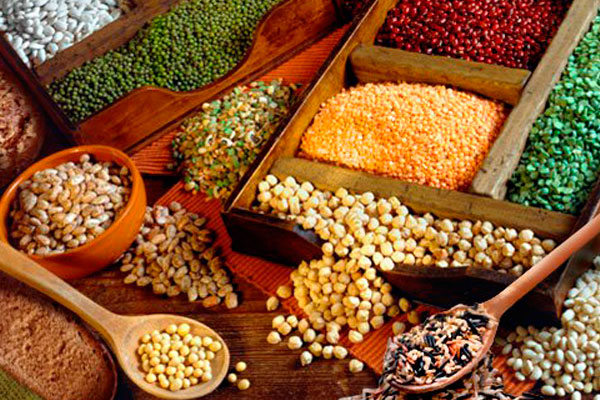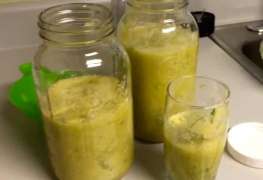 One of the biggest complaints about weight loss diets is that they’re plain boring. This complaint stems from the sad fact that many of us associate dieting with deprivation.
One of the biggest complaints about weight loss diets is that they’re plain boring. This complaint stems from the sad fact that many of us associate dieting with deprivation.But it doesn’t have to be that way.
Eating a variety of foods spices up life in two important ways. First, there’s more to weight loss than broiled chicken and vegetables – there’s a variety of flavors and textures that make healthy food interesting. Foods in their natural state contain a wide spectrum of nutrients and each nutrient supports health in different ways.
When you see the variety of colors and textures available within just one category of foods (for example, fruits and vegetables) you can appreciate that we’re meant to mix it up. Versatile foods are those that can be used in different ways, and can easily be cooked or seasoned in dozens of different ways to make them more interesting.
Grains:
Contribute versatility to any diet in terms of taste, texture and nutrition. Grains are good sources of protein, carbohydrate (and fiber) and healthy fat. Dieters should keep a variety of grains handy – to eat cold or hot, and for ingredients in recipes. For an easy hot breakfast, whole oats, Wheatena, groats, or any whole grains or blends of whole grains are interchangeable. My favorite cold cereals contain low sugar (8 grams or less per 3/4-1 cup serving) and a minimum 4 grams of fiber. These include Mini Shredded Wheat & Bran, or Kashi GoLean (not the sugar-sweetened “crunch”), and Fiber One.
Fruits:
Best in class for antioxidant potency include blue and red (berries, cherries), citrus fruits, mango and papaya. Fruit is versatile because you don’t need to buy fresh. Frozen fruit, like frozen vegetables, is equally or even more nutritious than fresh. Fresh produce shipped over long distances or languishing in the grocery store and/or your refrigerator, compared to flash-frozen produce, the nutrition content could be diminished. Canned or jarred should be packed in water or juice – not syrup.
Vegetables:
Keep it green – and red, purple and orange. My favorite versatile starchy vegetable is the nutrient-packed sweet potato. Go beyond baked. Sweet potatoes are great in stews, soups, roasted as a side dish, or mashed. Sweet potato “fries” are a great alternative to white potato fries. Slice into wedges, toss with some olive oil, pepper and thyme, and bake in hot 375-degree oven for about 15-25 minutes, shaking the pan every 5 minutes until done.
Dairy:
Besides cow’s milk, versatile “dairy” includes milk as well as milk substitutes, such as almond, soy or rice milk – and yogurt! Make your own flavored yogurt by adding no sugar-added preserves to delicious, thick Greek yogurt. Try low-fat buttermilk in all recipes that call for regular milk – it’s got terrific flavor.
Protein:
All animal proteins contain all the essential amino acids necessary for good health – and some plant foods are richly blessed with as equally robust amino acid profile as meat. Soy is quite versatile. In addition to soybeans, two versatile soy products are firm tofu and tempeh (a delicious pressed soybean cake). Both are great in stir-fry or grilled instead of meat. Quinoa is another dieter’s friend. It’s a nutritional powerhouse with all 9 essential amino acids, and it’s so versatile in recipes. Prepared similarly to bulgur wheat or brown rice, try quinoa for the nutty taste and crunchy texture plus improved nutritional value. Fish are quite versatile and they too don’t have to be fresh to be best. Stock up on canned fish. Salmon, sardines and anchovies can be ready in a jiff. Mash with some salsa for a sandwich or dip, or simply add them to an omelet, stew, or spaghetti sauce.
Fat:
All fats are not equal – there’s a range of oils that will both enhance your nutrition and can change the flavors of your diet. Different oils have different smoke points, making some better for cooking, and others better for salads and cold dressings. Keep it versatile by buying some extra virgin olive oil for salads, canola oil for sautéing. Sesame, walnut, and truffle oil add unique flavor.
Sweeteners:
What would life be like without a little sweet in it? There are a variety of options for dieters to choose depending on your personal preferences and tastes. The Food & Drug Administration has a list of approved artificial, no-calorie sweeteners. My versatile pantry includes honey, sugar, maple syrup and molasses that I use interchangeably for cooking and baking, depending on the recipe. All “natural” sugars are recognized the same by the body – they all contain about 20 calories per teaspoon.








Leave a comment